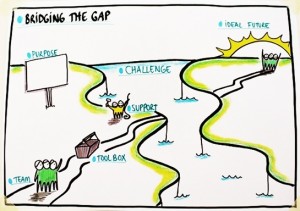I don’t know if you have any brothers or sisters or where you fall in the birthing order. I happen to be one of three. There’s my older sister, my middle brother, and I’m the baby. What I want to talk about today is why you want to become the problem child. And we’re going to get into the marketing side of that in a little bit, but first let’s dig into some studies.
Pecking Order
According to a recent study at MIT, second-born children, particularly boys, tend to be the troublemaker or the black sheep in the family compared to their older or younger siblings. Another study says that youngest children are often described as spoiled, willing to take unnecessary risks, and are less intelligent than their oldest siblings. Psychologists had theorized that parents coddle their youngest. As a result, they’re willing to be risky.
Firstborn children tend to be reliable, conscientious, structured, cautious, controlling, and achievers.
The middle child tends to be people-pleasers, somewhat rebellious, thrive on friendships, have large social circles, and they tend to be the peacemaker.
Now the youngest child tends to be mature for their age, perfectionists, conscientious, diligent, and leaders. I don’t know about you, but I’m the youngest, I’m kind of a mix of all of the above.
The Problem (Solving) Child

I don’t know if I believe in this science stuff, but here’s one thing I do believe. We all want to be the problem child. Not the one that causes the problem, but the one that solves the problem. What you want to do in business is find your client’s problem and solve it. You have to ask constantly what’s keeping your clients and prospects up at night, and then you have to find a way to solve that problem for them. The better you solve it, the more likely they will pay you more money, keep you engaged, and keep having you solve problems for them.
Now, you don’t want to create problems to solve. You want to be the person that comes in, not necessarily like a knight in shining armor, but you want to come in and do a handful of things.
Cheaper, Faster, Better
I’m sure you’ve heard the adage cheaper, better, faster, pick two. But in the case of solving problems for your clients or prospects, we actually want to do all three. Let me explain.
Better
The first thing that we want to do is solve it better. The question is, what can you do to save time for the end user or the client themselves? Is it saving costs or is it increasing outcomes? What is the result of what you’re doing that solves it better? And finally, can it save somebody’s job? Can you come in and help make sure that somebody either gets a promotion or is keeping their job or does something to make their business life better? That’s solving it better.
Faster

The second piece is can you solve it faster? Better results usually mean less work. Is what you’re doing creating less work for the end user or for the person that you’re working with? The next thing may be quicker results. Does it take less effort to get the results faster? Are you improving the speed in which they’re seeing the desired results? And the last one is smarter results. Is there less thinking or less of a process involved in getting what it is they’re trying to achieve or the problem that they’re solving? Can you show them how your process, or your system, or your strategy increases the likelihood that they will get the results that they want faster?
Cheaper
 Now, the last piece is to solve it cheaper and I’m not talking about the Walmart kind of cheaper, being the low price leader. What I’m talking about is that you can give them better results that end up costing them less in the long run. Are you filling in the gaps where they may have talent holes? Can you bring in a team of people to actually make it more cost-effective to get the project done? There’s a big difference between hiring employees and bringing in just-in-time people to get projects done. One of the things I focus on is making sure that I bring in the right people at the right time. When that project’s done, they no longer need to be paid. It becomes very efficient for the end-user and for the client.
Now, the last piece is to solve it cheaper and I’m not talking about the Walmart kind of cheaper, being the low price leader. What I’m talking about is that you can give them better results that end up costing them less in the long run. Are you filling in the gaps where they may have talent holes? Can you bring in a team of people to actually make it more cost-effective to get the project done? There’s a big difference between hiring employees and bringing in just-in-time people to get projects done. One of the things I focus on is making sure that I bring in the right people at the right time. When that project’s done, they no longer need to be paid. It becomes very efficient for the end-user and for the client.
Then finally, you want to make it so it’s repeatable and scalable. Is what you’re doing giving them an opportunity to increase their time to do other things? Does it increase their profits so they have more resources? By doing it less expensively, you’re giving your client more. But it doesn’t necessarily mean as I said, charging less. It’s giving better return on investment. You have to know what that return on investment is.
B.R.A.T. – Better Returns Around Transitioning

One of the things that you can do is start to think like that youngest child. Don’t become spoiled. Don’t expect to become complacent either. You have to be willing to explore, take some risks, and try some new things.
One of the things that I do specifically is I try them on my own business first. If I can get a software solution or a problem-solving technique to work on my own business, I know there’s a better opportunity to employ that with a customer and get even better results for them. I’m willing to take the risk on my own business first. The other thing the youngest child does is make waves.
Final Thoughts
 Don’t be afraid to make those waves. Take charge and change things up, but be patient. You may have to suggest it over and over and over to make a case on why you want to do things differently. But the key thing is, you need to be able to be ahead of the curve and constantly looking out for new and better ways to do the things that you’re doing.
Don’t be afraid to make those waves. Take charge and change things up, but be patient. You may have to suggest it over and over and over to make a case on why you want to do things differently. But the key thing is, you need to be able to be ahead of the curve and constantly looking out for new and better ways to do the things that you’re doing.
Don’t get stuck in a rut. And then the final piece of this is to keep listening to your elders. I talk to my big brother and sister quite a bit, but they also have mentors and I’m not afraid to learn from people who are younger than me. That’s why I love interviewing people because I want to find out what’s working for them, so always be on the lookout for new.
I would love to hear your thoughts on this. Comment below and share your thoughts, ideas, or questions about how you can be the problem child in business. Have you had to overcome any of the presented concepts? What worked and what did not live up to expectations? Do you have any ideas or advice you could share?
Business & Finance Articles on Business 2 Community
(30)





